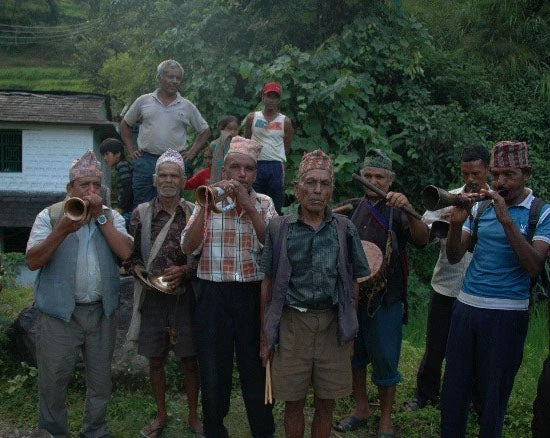
Working in the renewable energy sector for the World Bank since 2010, I have visited more than 50 Micro Hydropower Plants (MHPs) in rural Nepal. From villages high up in the hills inaccessible by even the toughest 4WD jeeps to settlements perched on steep slopes, to one powerhouse that could only be reached by crossing a cold river with shoes in hand.
And with every community I visited, every family that welcomed me, I felt the same happiness to see them celebrate the commissioning of a MHP in their village. They enjoy evenings and nights as they chat, eat and watch TV with their family under the electric lights.
Just like the rural electrification projects in other developing nations in which I have worked, I have observed that MHPs contribute to improve rural livelihood in Nepal. A few electric lights can be used in each household during night time; rural people enjoy watching TV as an information source and entertainment; local schools can provide night classes for children who need to support their families with farm work during day time; health clinics are able to keep vaccines in refrigerator; water is pumped up for irrigation; new businesses such as battery charging stations and internet houses are created, and so on.
But in Nepal, I have also recognized the universal problems on the rural electrification projects, such as: low and fixed tariffs; low electricity consumption during day time due to limited end users (which results in a low plant load factor [about 25 percent] and electricity sales income); possible income only to cover regular operation and maintenance – which is impossible to repay for an initial investment (or construction cost), and no savings for unexpected problems or damages.
However, the most serious problem I observed is the Nepal Electricity Agency’s (NEA) distribution line extension to the electrified villages only a short while after the MHPs’ commission. As the NEA extends its grid to rural areas, many MHPs will become redundant. At present, it is said that 34 MHPs with net present capacity of 1.0 MW have been affected and 56 MHPs with net capacity of 1.7 MW have high potential to be affected by the gird extension in the near future.
Although the Alternative Energy Promotion Centre (AEPC) has been promoting rural electrification programs since 1996 and successfully developed more than 1,000 micro hydro power plants (MHPs) with a total capacity of 25 MW, selection of MHP projects have been based on requests from local communities and developed ad hoc.

The NEA, together with private independent power producers, have a total domestic generation capacity of 760 MW and supply on-grid electricity to about 45 percent of the population (27.8 million); while the AEPC support off-grid electricity supply to 25 percent of the population. The remaining 30 percent of the population, mostly in rural and remote areas, have no electricity.
The NEA customers are facing up to 12 hours load shedding per day. Since the NEA do not have enough generation capacity to supply sufficient electricity to the current customers, there is no incentive for the NEA to extend the distribution network to rural areas to increase the number of customers.
Coordination between the AEPC and the NEA is limited since they are under different ministries: the AEPC is under the Ministry of Science, Technology and Environment and the NEA is under the Ministry of Energy. The AEPC supports MHPs development, assuming an economic life of minimum 15 years in areas where the NEA grid is unlikely to be extended within five years. The NEA, however, makes grid extension plans on a yearly basis. Therefore, it is hard to predict how grid extension will affect MHPs in the long term.
To utilize the limited amount of funds for the rural electrification programs in Nepal efficiently, it is time the government took logical and systematic steps to facilitate the rural electrification program by introducing the right policies.
Giving preference to purchasing power from MHPs by connecting them to the NEA grid, scaling up MHPs by aggregate demand (or communities to be electrified) and optimize site potential to take advantage of scale for reducing the development cost, building grid compatible MHPs having an off-grid distribution network meeting NEA standards and household metering systems for smooth grid connection in the future, and harmonizing rural electrification programs by effective coordination between the AEPC and NEA are some examples of policy recommendations.
The new report ‘ Nepal: Scaling Up Electricity Access though Mini and Micro Hydropower Application’ jointly executed by the AEPC and the WB with the financial support provided by the Asia Sustainable and Alternative Energy Program (ASTAE) provides detailed analysis results and summary of policy recommendations.
Although there is techno-economic potential to generate 43,000 MW of hydroelectric power in Nepal, rural people cannot wait for more than 10 years required for the development of large hydro power plants and for the NEA to extend the distribution network to supply electricity on-grid. Therefore, the NEA’s power facility development for on-grid services in the long term and the AEPC’s rural electrification program for off-grid services in the short and middle term need to be carried out in parallel.
Please feel free to share your opinions on how to facilitate electrification supply to rural Nepal more efficiently and make the rural electrification projects sustainable by participating in the online chat held from 5:00PM to 7:00PM on Wednesday, September 30 in Nepal time (or from 7:15AM to 9:15AM in DC time) on the World Bank Nepal Facebook Page.


Join the Conversation